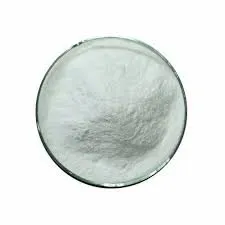
Сеп . 11, 2024 16:17 Back to list
HEC Cellulose - Hydroxyethyl Cellulose for Various Applications
HEC Cellulose An Essential Polymer in Modern Applications
Hydroxyethyl cellulose (HEC) is a non-ionic, water-soluble polymer derived from cellulose, a natural polymer extracted from plants. Its unique properties make it a vital ingredient in various industries, including pharmaceuticals, cosmetics, construction, and food processing. HEC is primarily used as a thickening agent, stabilizer, and emulsifier, thanks to its ability to modify the viscosity and texture of solutions.
One of the most significant advantages of HEC is its solubility in warm water, which allows it to dissolve and reformulate without the need for heat. This property makes it particularly valuable in industrial applications, where temperature control is crucial. HEC can enhance the performance of formulations by increasing their viscosity, which can improve suspension stability and prevent sedimentation in products like paints, adhesives, and personal care items.
HEC Cellulose An Essential Polymer in Modern Applications
In the realm of cosmetics, HEC is a popular ingredient in lotions, creams, and gels. It acts as a thickener that improves the texture and application of products, providing a smooth and luxurious feel. HEC also helps in stabilizing emulsions, ensuring that the oil and water phases do not separate over time. Its film-forming properties contribute to product longevity and efficacy by creating a protective barrier on the skin.
hec cellulose

The construction industry has also adopted HEC due to its ability to improve the workability and performance of cement-based materials. When added to mortars and plasters, HEC enhances water retention, which helps in maintaining the required consistency for longer periods. This not only improves the ease of application but also contributes to the overall strength and durability of the structures being constructed.
Another vital application of HEC is in the food industry, where it is used as a food additive. Its thickening and stabilizing properties can improve the texture of various products, such as sauces, dressings, and dairy items. HEC also helps prevent ice crystal formation in frozen products, enhancing their quality and shelf-life.
Despite its widespread use, the production of HEC raises questions about sustainability. As it is derived from cellulose, which is usually sourced from wood pulp, there are concerns about deforestation and environmental impact. Many companies are now focusing on developing sustainable practices, such as sourcing cellulose from recycled materials or agro-industrial waste, to mitigate these concerns.
In conclusion, hydroxyethyl cellulose is an invaluable polymer with diverse applications across multiple industries. Its unique properties as a thickener, stabilizer, and emulsifier make it essential for formulating high-quality products in pharmaceuticals, cosmetics, construction, and food processing. As industries continue to evolve, the demand for sustainable and effective polymers like HEC will likely increase, making it a key player in future innovations.
-
Versatile Hpmc Uses in Different Industries
NewsJun.19,2025
-
Redispersible Powder's Role in Enhancing Durability of Construction Products
NewsJun.19,2025
-
Hydroxyethyl Cellulose Applications Driving Green Industrial Processes
NewsJun.19,2025
-
Exploring Different Redispersible Polymer Powder
NewsJun.19,2025
-
Choosing the Right Mortar Bonding Agent
NewsJun.19,2025
-
Applications and Significance of China Hpmc in Modern Industries
NewsJun.19,2025







